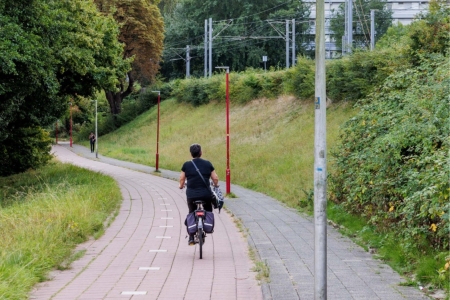The SWOV report Safe cycling routes contains seven indicators for safe cycling infrastructure at the route level. These indicators can help road authorities to make existing cycling routes safer, identify safe routes to make more attractive and construct new cycling routes more safely.
SWOV researcher Sarah Gebhard:
'At the level of local road design, we already know quite a bit about how to make a road safer for cyclists. However, much less is known about this at the network and route level. Indicators were developed to compare the safety levels of different cycling routes. Safe route indicators developed for cars in a previous study were adapted to cyclists based on a literature review and application of the principles of Sustainable Safety to bicycle traffic.'
This resulted in the following indicators:
- Travel distance as short as possible;
- Travel time as short as possible;
- Low intersection density, especially for intersections with distributor roads;
- Cyclists should follow exclusive bicycle tracks as much as possible;
- The use of 50km/h distributor roads without separated bicycle tracks should be avoided;
- As few left-turns as possible;
- As few transitions and discontinuities as possible.

